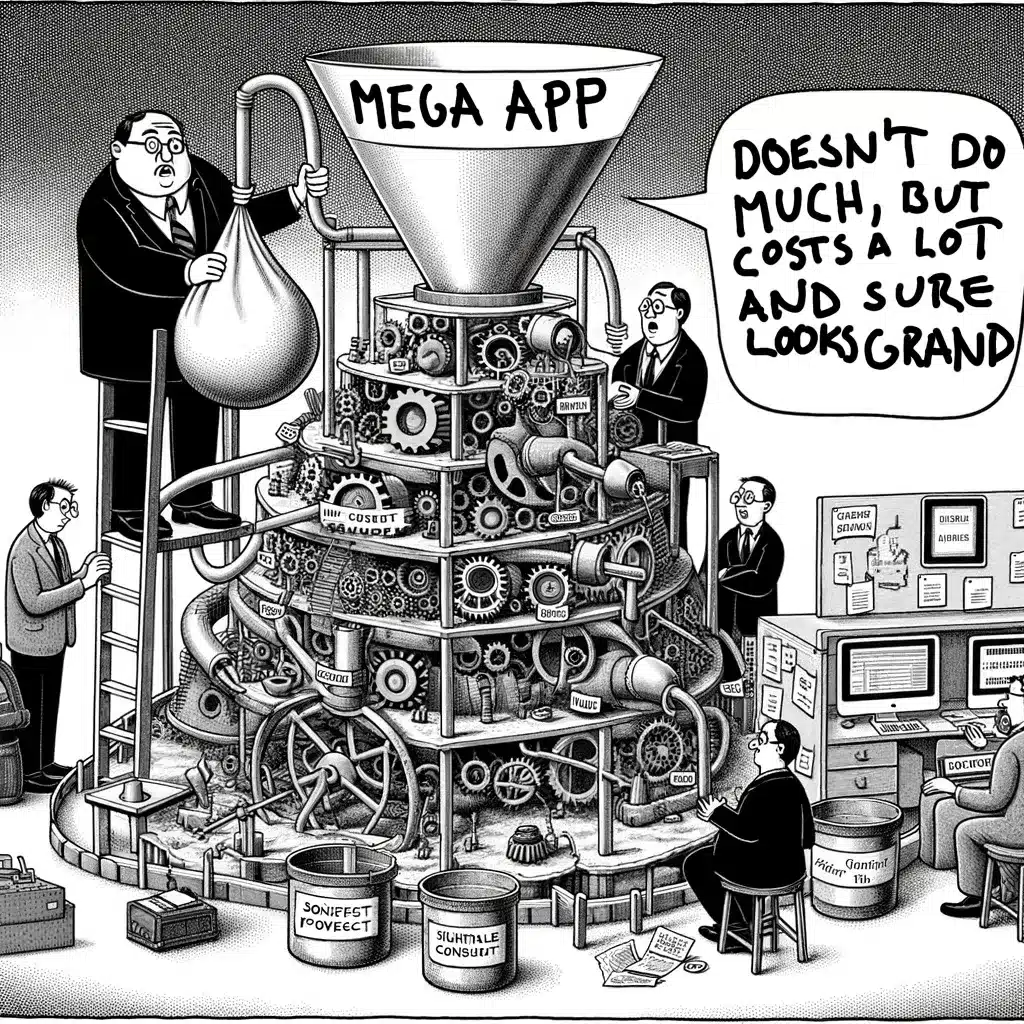My Software Project is Failing: Now What?
As an entrepreneur or business leader about to invest in a software application for your business, you’re faced with a significant decision: hiring a development shop. Outsourcing a development team seems straightforward, with many development companies available globally. However, it entails placing trust in a team to execute a task you cannot do yourself, which makes evaluating the app and its code against modern quality standards challenging.

While most development shops are competent and capable of delivering quality outcomes, projects can still go astray due to various factors. These include poor technology choices, low-quality development, dysfunctional software teams, lack of quality control, and insufficient planning, among others.
Throughout my career, I’ve contributed to many successful projects, experiences I deeply value. However, I’ve also been on the other side, hired as a consultant to audit low-quality development jobs or to perform damage control for development teams when a software project has gone awry. I understand the pain and problems involved and want to share these insights with you.
In this article, we’ll explore what makes software great and the signs that a software project is heading in the wrong direction. We’ll also discuss the steps you can take when these signs emerge.
Good Software: The Importance of Software Extensibility and Understandability
Good software is not just about what it does today. It’s about how adaptable it is for tomorrow. It needs to be extensible, with a structure/architecture that allows for the easy addition of features and adaptation to changing needs.
Moreover, the code should be understandable, enabling any competent developer to step in and make necessary changes without a steep learning curve. This aspect of software development is often overlooked in the rush to meet deadlines or cut costs, but it determines the software’s longevity and value in the long run.
The following quote excellently captures what a high quality software is supposed to be:
Software has two types of value: the value of its behavior and the value of its structure. The second of these is the greater of the two because it is this value that makes software soft.
Robert C. Martin in “Clean Architecture
This insight is crucial. You may end up with software that functions as intended, but if its structural value is lacking, its overall worth plummets. A software product that is a nightmare to modify, update, or maintain is essentially a costly liability. Its complexity can deter anyone from working on it, making it a dead-end investment.
How to Recognize That a Software Project is Off-Course?
Noticing that a software project is veering off track can be challenging, especially for a non-technical person. Often, the development team’s project manager might assure you that everything is fine, leaving a very professional impression. However, despite these assurances, you might still have a feeling that something isn’t quite right. Problematic development usually reveals itself through some of the following signs:
1. Deviating from Initial Plans and Specifications
If you notice the project frequently deviating from initial plans or specifications without clear justification, it’s a red flag. Regular deviations can indicate poor planning, a lack of understanding of the project’s goals, or a malfunctioning team.
2. Frequent and Unexplained Delays
While some delays are inevitable, frequent and unexplained delays in deliverables are clear warning signs. They often point to project management issues, underestimating task complexity, or resource constraints. As the client, you shouldn’t bear the cost of these inefficiencies.

3. Poor Communication and Reporting
Effective communication is key in any project. If you’re experiencing a lack of regular updates, unclear communication, or your developer is offline for days, it’s a problem. If you often find yourself wondering ‘what is going on?’, these are clear signs of trouble.
4. Poorly Addressed Bug Fixes
When there’s a software build for testing a feature, and you’ve provided feedback, prompt issue resolution is crucial. If fixes take too long and often introduce unrelated bugs, it’s a sign of poor code quality. While bugs and non-functioning features are common, a well-managed project should allow for quick refactoring and bug fixes.
5. Performance Issues
Poorly written code often runs slowly. If you’re encountering many performance issues, it’s likely you’re receiving low-quality software. Some performance issues mid-development and before optimization are normal, but if these problems are frequent and unresolved, it’s a red flag.
Responding to Warning Signs in Software Development
Realizing that your project exhibits warning signs can be disconcerting, especially after investing significant time and resources.
In my experience as a tech lead, developer and a consultant, hoping for improvement in the next version often leads to a destructive cycle. The project typically deteriorates with each update, accumulating more bugs and issues. Clients frequently find themselves in a frustrating and costly situation, clinging to the belief that things will get better. However, they often end up deeply entangled in a project marked by low quality and unmet expectations.
Even if the final product performs its functions, the lack of structural integrity, as previously discussed, renders it a poor investment in the long run.
So, if you find yourself facing the unsettling realization that your project is heading south, there are proactive measures you can take.
Here’s a guide to steer your project back on track:
- Stop and Reassess: Don’t wait for miracles in the next version. No matter how painful or costly, pause the project and objectively assess the situation.
- Conduct an Audit: Engage an independent expert to conduct a code audit. This will clarify the current state of the project and the work quality.
- Evaluate Your Options: Based on the audit, determine if the project can be salvaged and at what cost. Sometimes, starting afresh with a new team is more effective than fixing a deeply flawed system.
- Make Informed Decisions: Base your decisions on current reality, not past expenses and upcoming deadlines. Avoid the sunk cost fallacy — continuing to invest in a failing project just because you’ve already invested a lot.
Remember, in software development, the sooner you identify and address issues, the less costly and time-consuming it is to correct the course.
Be the Critical Eye
In closing, oversight in software development projects is vital, especially when dealing with new contractors promising the world for a fraction of the price. Subtle signs of trouble can indicate larger issues leading to bad outcomes.
Business managers and leaders should carefully consider affordable development solutions, particularly from cheaper dev shops in South Asia. Experience shows that the time, effort, and stress involved in managing such projects often negate initial savings and result in a longer, more costly process than more reputable options.
Prioritize hiring teams with a proven track record and solid reputation.
It might seem like a higher initial investment, but the assurance of quality, efficiency, and peace of mind is invaluable. Trust this advice, and you’ll likely thank yourself later.
I’m a Tech Lead and iOS Developer leading a skilled team in WordPress and mobile app development. If you’re looking for expertise in bringing your digital projects to life, I’d be glad to discuss how we can work together.
For more information about my services and past projects, visit https://teemusk.com/. Feel free to reach out to me on social media for any project inquiries or collaborations.
Let’s make your next project a success!


